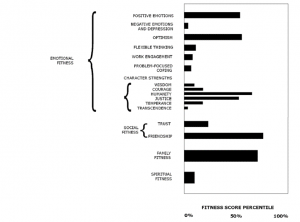
Above: A side-image of a child with developed skin rashes as a result of the German Measles virus, also commonly known as Rubella. (Source: Public Health Image Library (PHIL), Centers for Disease Control and Prevention)
According to the U.S. Centers for Disease Control and Prevention, hundreds of thousands of people are killed or hospitalized each year by vaccine-preventable diseases. A startling amount of those people are children that are no more than five years of age. Despite the countless lives that vaccines have saved since their introduction in global society, a shocking amount of people still succumb to illnesses and complications that often result from not receiving vaccinations. Even more shocking, however, is that so many children fall victim to the often-fatal side effects of not receiving vaccines. It is puzzling that in a society where countless strides have been made, thousands of people are still dangerously misinformed about the true safety and effectiveness of most vaccines. For example, most college students often choose not to receive an Influenza vaccine each year according to Ramsey, Meagan A., and Cecile A. Marczinski. It is obvious that more work must be done to truly convince the public about the true nature of vaccines.
The task at hand is quite broad, and there are multiple factors that must be considered. For example, how do you reverse damage that was caused decades ago? It is clear that most people have been read or heard about an infamous “study” that noted a correlation between the development of autism and the MMR vaccine. Rao, T. S. Sathyanarayana, and Chittaranjan Andrade explain the controversial study and its problems especially well. The study was conducted by Alan Wakefield and colleagues, and ultimately, concluded that children who received the MMR vaccine were more likely to develop Autism.
Autism is a rare, developmental disorder which is often associated with a broad range of learning, communication, and behavioral issues. The MMR vaccine refers to Measles, Mumps, and Rubella; three diseases that are possibly fatal to individuals who are particularly susceptible. In reference to Wakefield’s study, multiple confounding variables were not accounted for. Consequently, the results were extremely skewed. Despite the issues that the article had, the Lancet still published it. Although other research quickly refuted Wakefield’s findings, it was not long before parents noticed his results. As a result, MMR vaccination rates dropped, and the study had made its mark on the public.
For the public to understand the true nature and effectiveness of vaccines, many vaccines must be considered and analyzed. Along with routine childhood vaccines, data was collected from studies with reference to DNA vaccines (Klinman, Dennis M., et al.), Rotavirus vaccines (Gray, J.), and the common H1N1 (Influenza) vaccine (Ramsey, Meagan A., and Cecile A. Marczinski.)
While each article mentioned flaws with its vaccine in question, conclusions were more or less of the same: vaccines are not only safe to children as well as most of the general population, they are also effective most of the time. These results are fairly credible as most of the studies acquired data from governmental or educational data sources, such as the Centers for Disease Control and Prevention and the Food and Drug Administration. However, the articles do have an issue in that fact that there is very limited experimental data mentioned in the results. Experiments are often the best for establish causal relationships among variables as scientists can often isolate and compare a variable and its effects on another controlled variable. Although this is an issue, it is very difficult to conduct experiments in relation to this topic as ethical concerns begin to play a crucial role.
To illustrate how the public still has their doubts about vaccines, a particular article involving college students and their perception of the common Influenza vaccine was analyzed. Ramsey, Meagan A., and Cecile A. Marczinski found that of the 514 undergraduate students at Northern Kentucky University, only about 15% were planning on receiving the Influenza vaccine. Despite most universities’ clear warnings about the dangers of Influenza and how easily it is spread, a growing number of students still avoid the vaccine.
This result is shocking, as the vaccine which prevents this possibly-fatal infection goes largely ignored by the United States’ “best and brightest”. Even more startling, in a recent article published in the Chicago Tribune, Sun and Lena H. claim that the number of children in the U.S. who do not receive vaccinations is climbing exponentially. This clearly illustrates how misinformation is running rampant in the United States.
To combat this spread of faulty information, data was gathered from multiple sources involving certain vaccines’ true safety and efficacy. One article studied the nature of DNA vaccines; newer vaccines that still need more research done before they can be fully introduced into the global society. Another article studied the Rotavirus and its vaccine, and one studied the nature of a multitude of childhood vaccines. All of these studies mention how there are, of course, potential side effects that go along with receiving vaccines. (what did they do with the data/ what did they find)
However, these are usually only present in a case-by-case basis, and only arise due to pre-existing health issues. The article that studied the Rotavirus mentions the complication associated with the disease, including its dangerous gastrointestinal issues. The article mentions how over half a million children are killed each year as a result from vomiting, diarrhea, and fever; all symptoms of Rotavirus.
Using observational data, the Rotavirus was concluded to prevent the disease effectively and only noted adverse effects in few infants in a relatively large sample size. The article involving childhood vaccines drew large-scale statistics from multiple sources about myriad vaccines that are given to children every year. Unsurprisingly, the results were more or less the same; the vaccines protected most children without any unusual adverse effects.
Although the public has been exposed to inaccurate information about vaccines, it is clear that multiple studies have attempted to reveal the truth about them. Overall, most studies concluded that vaccines are not only safe for the general public, but they are also effective against the disease that they were designed for. However, cases of unvaccinated individuals are still on the rise.
This is not an isolated problem, but a nationwide (epidemic) pandemic of misinformation about something that prevents millions of deaths each year from preventable diseases. Although it is hard to reverse damage caused by Wakefield’s infamous study decades ago, scientists and researchers world-wide must develop new ways of offering proper science to the public. It is the duty of citizens and scientists alike to spread accurate information about vaccines and stop the killer that is misinformation.
By D. Crowder
References
“A side-image of a child with developed skin rashes as a result of the German Measles virus, also commonly known as Rubella.” Centers for Disease Control and Prevention. https://phil.cdc.gov/Details.aspx?pid=22147
Gray, J. “Rotavirus vaccines: safety, efficacy and public health impact.” Journal of internal medicine 270.3 (2011): pp 206-214, https://onlinelibrary.wiley.com/doi/full/10.1111/j.1365-2796.2011.02409.x.
Klinman, Dennis M., et al. “DNA vaccines: safety and efficacy issues.” Springer seminars in immunopathology. 19.2. (1997). pp 245–256, https://link.springer.com/article/10.1007/BF00870272.
Ramsey, Meagan A., and Cecile A. Marczinski. “College students’ perceptions of H1N1 flu risk and attitudes toward vaccination.” Vaccine 29.44 (2011): pp 7599-7601, https://www.sciencedirect.com/science/article/pii/S0264410X11011807.
Rao, T S Sathyanarayana, and Chittaranjan Andrade. “The MMR vaccine and autism: Sensation, refutation, retraction, and fraud.” Indian journal of psychiatry 53.2 (2011): pp 95-96, http://www.indianjpsychiatry.org/article.asp?issn=0019-5545;year=2011;volume=53;issue=2;spage=95;epage=96;aulast=Sathyanarayana.
Sun, Lena H. “Percentage of Young U.S. Kids Who Don’t Get Vaccinated Has Quadrupled since 2001.” Chicagotribune.com, Chicago Tribune, 19 Aug. 2019, www.chicagotribune.com/lifestyles/health/ct-hlth-unvaccinated-kids-20181011-story.html.

